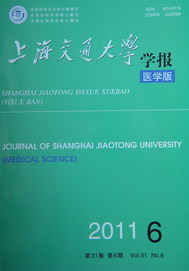Objective To observe the clinical manifestations in children with primary adrenal insufficiency, investigate the prevalences of DAX1 and SF1 gene mutations, and explore the possible mechanism of the disease. Methods Twentyfive boys with primary adrenal insufficiency were enrolled, the clinical characteristics were observed, and assistant examinations were performed. Genome DNA was extracted from peripheral blood, exon 1 and exon 2 of DAX1 gene were amplified by PCR for sequencing, and mutation screening of SF1 gene (exon 2-7) was conducted. Results There were symptoms of hyperpigmentation in skin, fatigue and weakness, nausea, vomiting and dehydration in all patients. Adrenal crisis occurred in 18 patients, and 8 patients had definite family history. Eight (53.3%) of the 15 adolescents had impaired sex development. Analysis of DAX1 gene identified 8 mutations (6 frameshift mutations,1 missense mutation and 1 nonsense mutation), six of which were novel (c.291delC, c.332-333delCT, p.E137X, c.605delG, c.731delG and c.838delG), and the other two (p.L262P in two male cousins and c.652-653delCA in 1 patient) had been reported. No SF1 gene mutation was identified. DAX1 gene mutations were found in 40% (10/25) of patients, in 62.5% (5/8) of those with impaired sex development, and in 100%(8/8) of those with family history. There were various clinical presentations and ages in patients with DAX1 gene mutations. Conclusion DAX1 gene mutations may be a frequent cause of primary adrenal insufficiency in children, while mutation in SF1 seldomly occurs. There are various clinical manifestations for gene mutations, and there may be no definite relationship between gene mutations and clinical manifestations.

